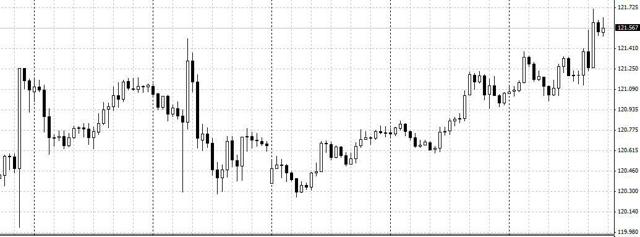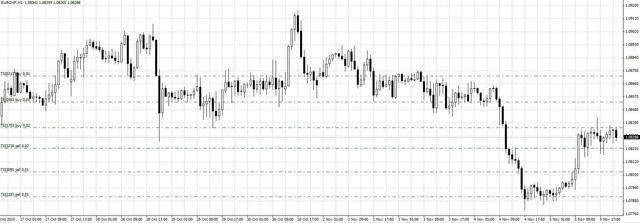Ok, so if you’re the world’s largest mining company, one thing you don’t want is a global deflationary supply glut brought on by depressed demand from China and a worldwide excess capacity problem.
Another thing you don’t want is for a tailings dam to burst, sending a river of toxic mud into a nearby village in South America.
Well, BHP Billiton is now dealing with both of those issues and the market is punishing the stock, which hit a seven-year low on Monday as analysts and investors alike attempt to figure out how the company intends to clean up a spectacular (in a bad way) mess in Minas Gerais.
Here’s what happened, in BHP’s words:
The Samarco operations include a three tiered tailings dam complex. Within this complex, the Fundão dam failed and the downstream Santarém dam has been affected. This resulted in a significant release of mine tailings, flooding the community of Bento Rodrigues and impacting other communities downstream.The third dam in the complex, the Germano dam, is being monitored by Samarco. At this time, there is no confirmation of the causes of the tailings release.
Samarco is jointly operated with Brazilian giant Vale and BHP has been keen to note that the joint venture is “responsible for the entirety” of the Minas Gerais operations. After the company's operating license was revoked on Monday, its debt plunged, with some $2.2 billion in paper due 2022, 2023, and 2024 hitting record lows.
For those who might have missed it, the following images will tell you pretty much all you need to know about what happened:
And here's Deutsche Bank's take, which underscores the significance:
BHP and Vale's 30Mtpa Samarco iron ore mine in Southern Brazil (50/50 JV) has suffered a catastrophic tailings dam failure. The mine represents c. 10% of our BHP earnings and 3% of NPV, we now assume the mine is shut until FY19. Pellet production was recently expanded to 30Mtpa at a cost of US$3.2b. Media reports have stated that there is a significant and tragic loss of life. Based on public images of the failure we estimate that the dam contained over 300Mt or 150Mm3 of tailings and Samarco could be down for years while the clean-up costs may exceed US$1b. This accident will add further pressure to BHP's cash flow, growth and safeguarding of the progressive dividendAt around 0530am AEST on Nov 6, Samarco’s largest tailings facility failed causing slurry to race through the open pit and down the valley into the local village of Bento Rodrigues and into local waterways. The media is reporting that between 15 and 17 people have died and 45 others are missing. Samarco states in its FY14 sustainability report that it employs a management system referred to as “Failure Modes and Effects Analysis (FMEA) system” to control tailings dam failure risks. It could be months before Vale, BHP, State and Federal governments complete their assessment of the incident. The clean-up, community support, litigation and rebuilding of the tailings dam (if approved and deemed feasible) could mean that Samarco is shut for years. The mine employs 3,100 people and is one of the largest employers in the region. Samarco contributed US$369m to BHP earnings in FY15 and before this incident we estimated it would contribute US$308m in FY16. We have assumed the mine is shut until FY19, the workforce remains employed, and BHP’s share of the clean-up and dam rebuild costs US$500m. We have excluded any recouping of costs from insurance at this stage.
Of course this is the sellside penguin brigade so naturally, all of that somehow translates to a "Hold":
As WSJ notes:
Brazilian officials on Sunday raised the death toll to three people, two of whom were found in the path of the mud flow, and a third who died while receiving medical treatment. That number is expected to rise, as at least 28 people are now confirmed missing.“BHP Billiton will continue to work with Samarco, Vale, the local communities, local authorities, regulators and insurers to assess the full impact of this tragic incident,” BHP said.The shutdown will reduce BHP’s iron-ore production this fiscal year—cutting into profit when falling commodity prices already are already making it more difficult for the company to keep its promise to maintain or lift shareholder dividends. Samarco last year accounted for roughly 3% of BHP’s underlying earnings.
Right, so in other words, this is an unmitigated disaster.
On the "bright" side, the fallout could take some excess supply offline, and could impact prices. Here's more, via Bloomberg:
- Deactivation of production at Samarco Mineracao mine, a JV between BHP Billiton and Vale, is likely to pressure iron-ore prices, Christopher Tuck, mineral commodity specialist at U.S. Geological Survey’s National Minerals Information Center, says in interview in Rio.
- "Any deactivation, on this scale, will have an impact on seaborne trade. The varying factor that would affect prices is the length of time this mine remains inoperable. The larger time it remains idled, the greater the likelihood it will have an impact on prices’’
- Potential impact on price of pellets much more significant than effect on overall market
- Short-term idling could level off prices through end of 2015; if output is halted long-term, prices could increase slightly
We suppose the takeaway here is that an already abysmal backdrop for BHP just got a lot worse, which means you may want to brace yourself if you're a shareholder and if you're a Brazilian villager, just hold your breath and wait for your compensatory check from Samarco - we're sure it's in the mail.

